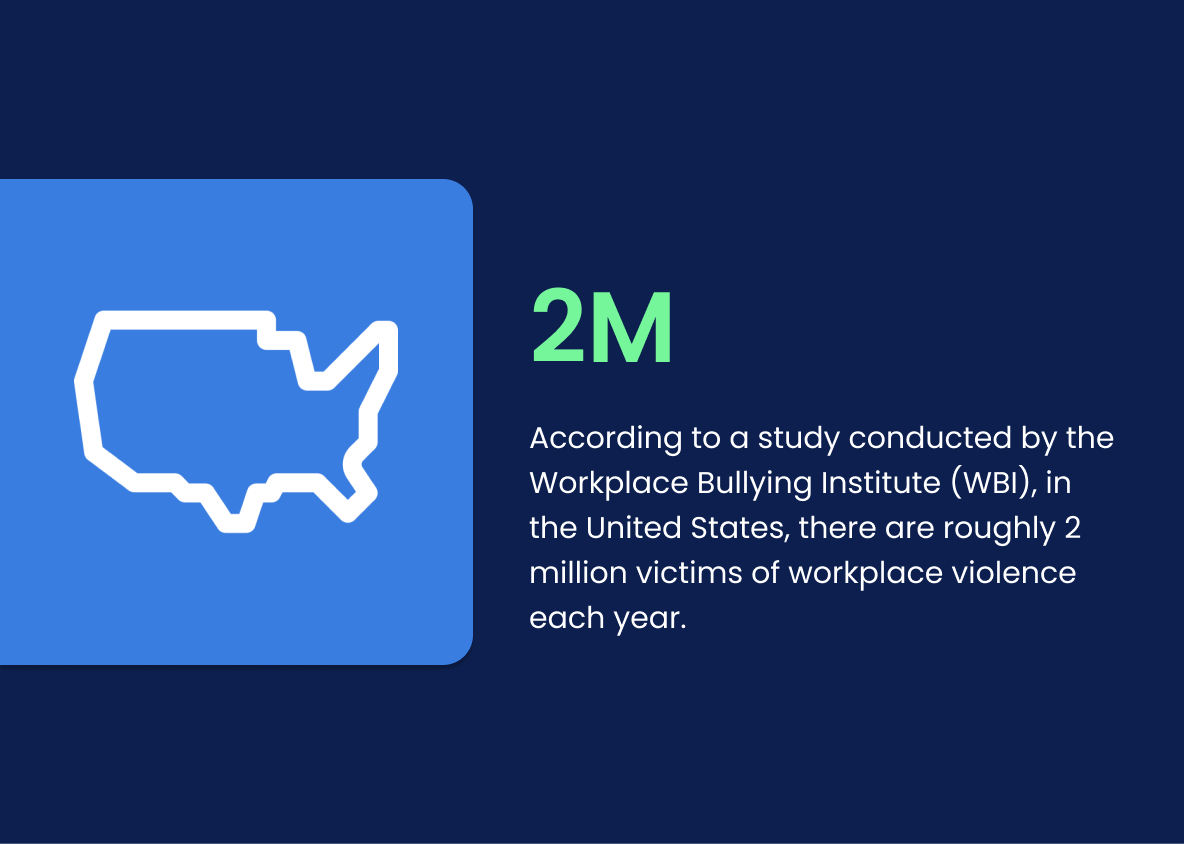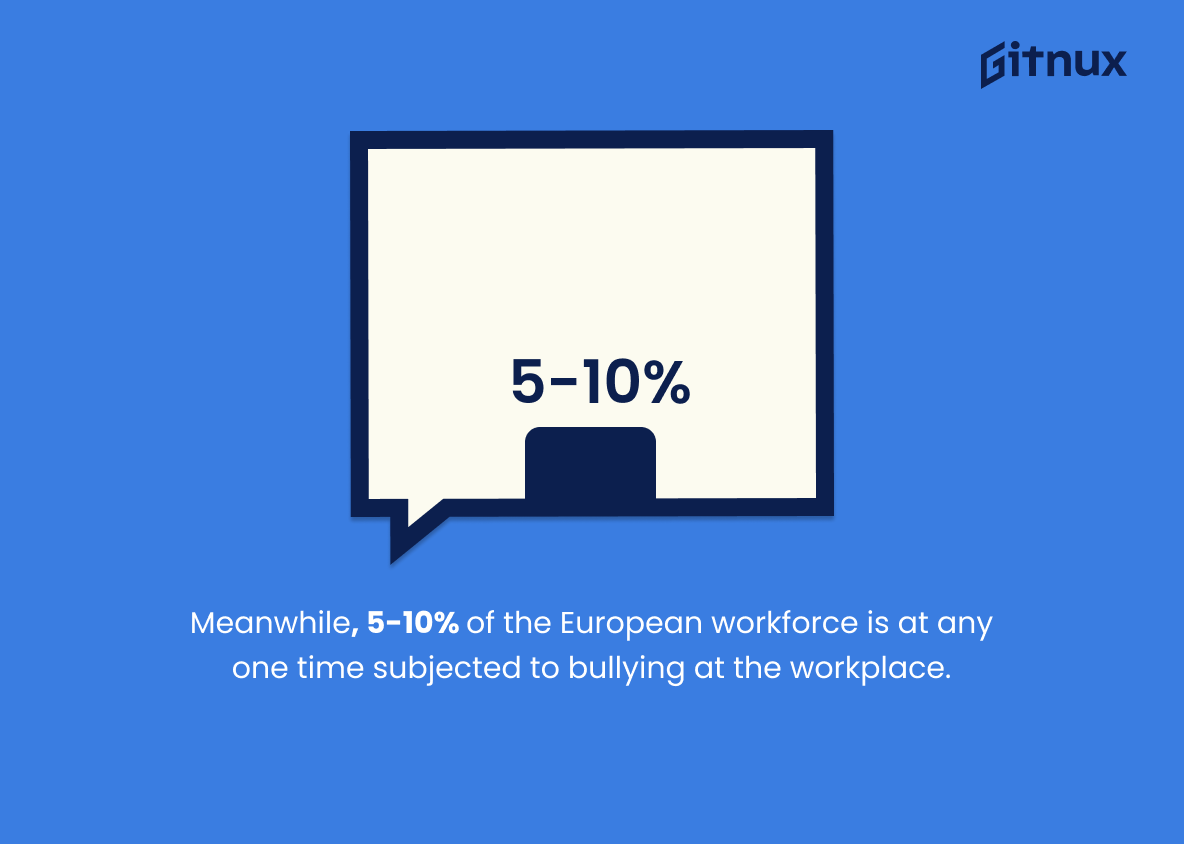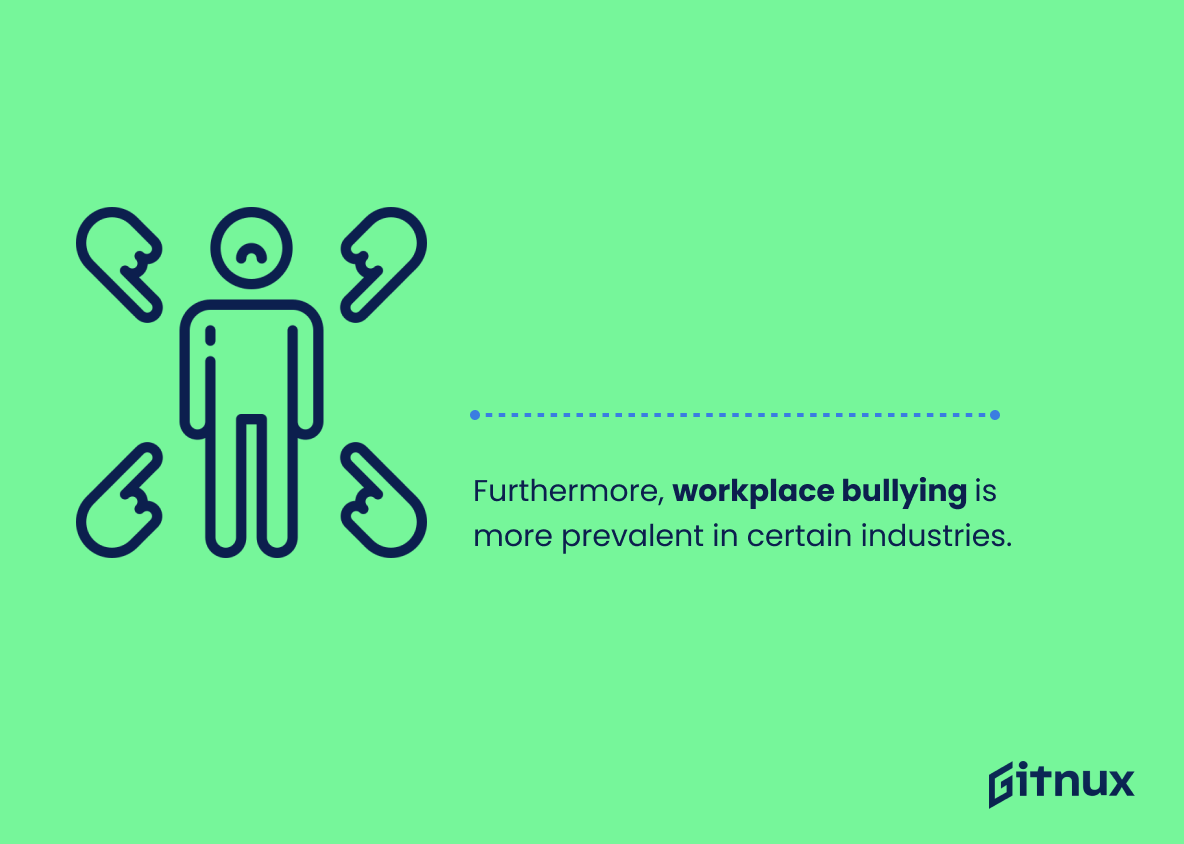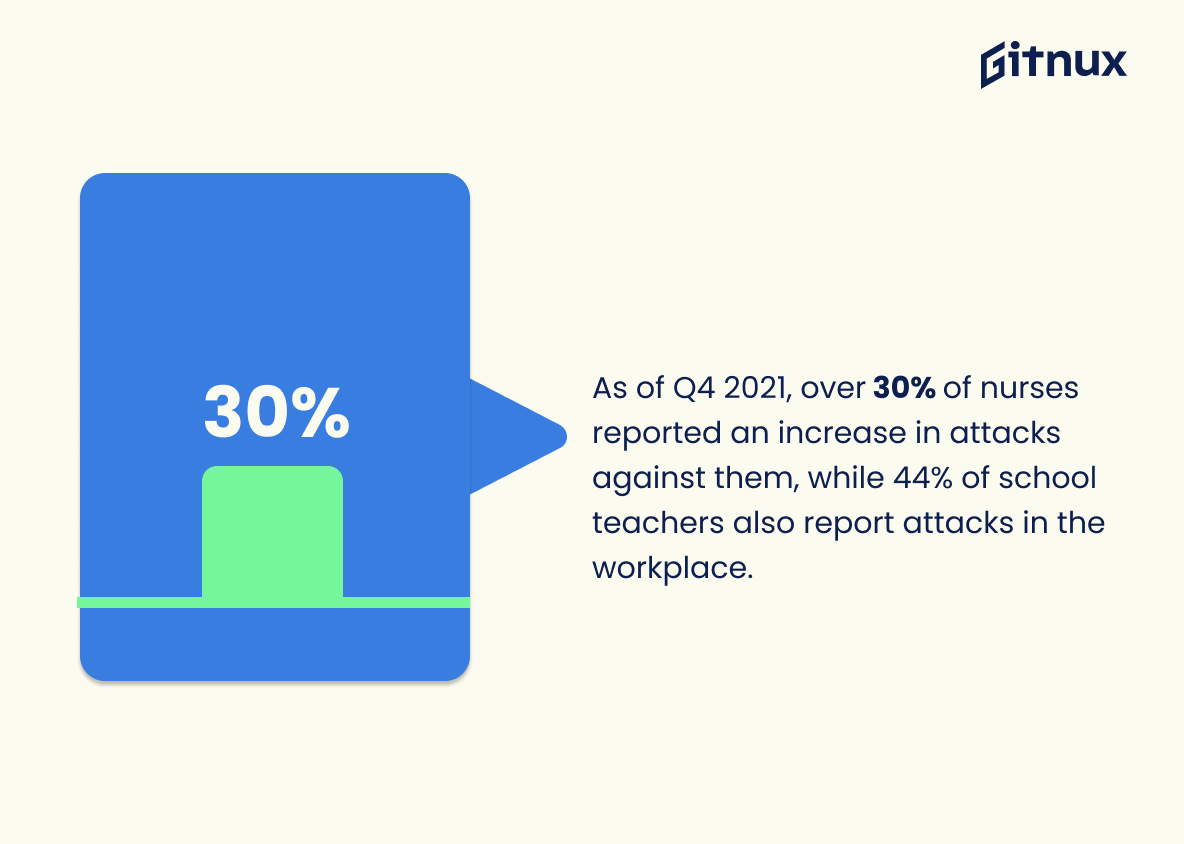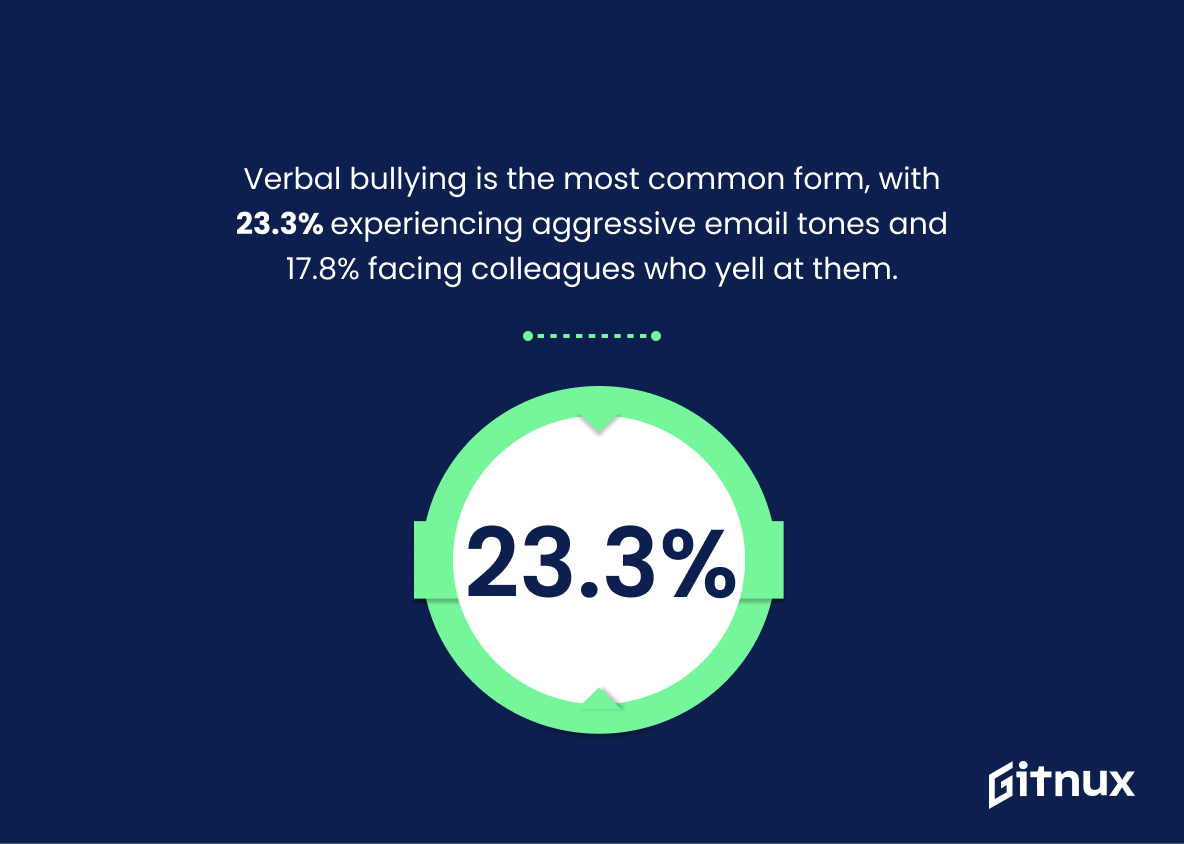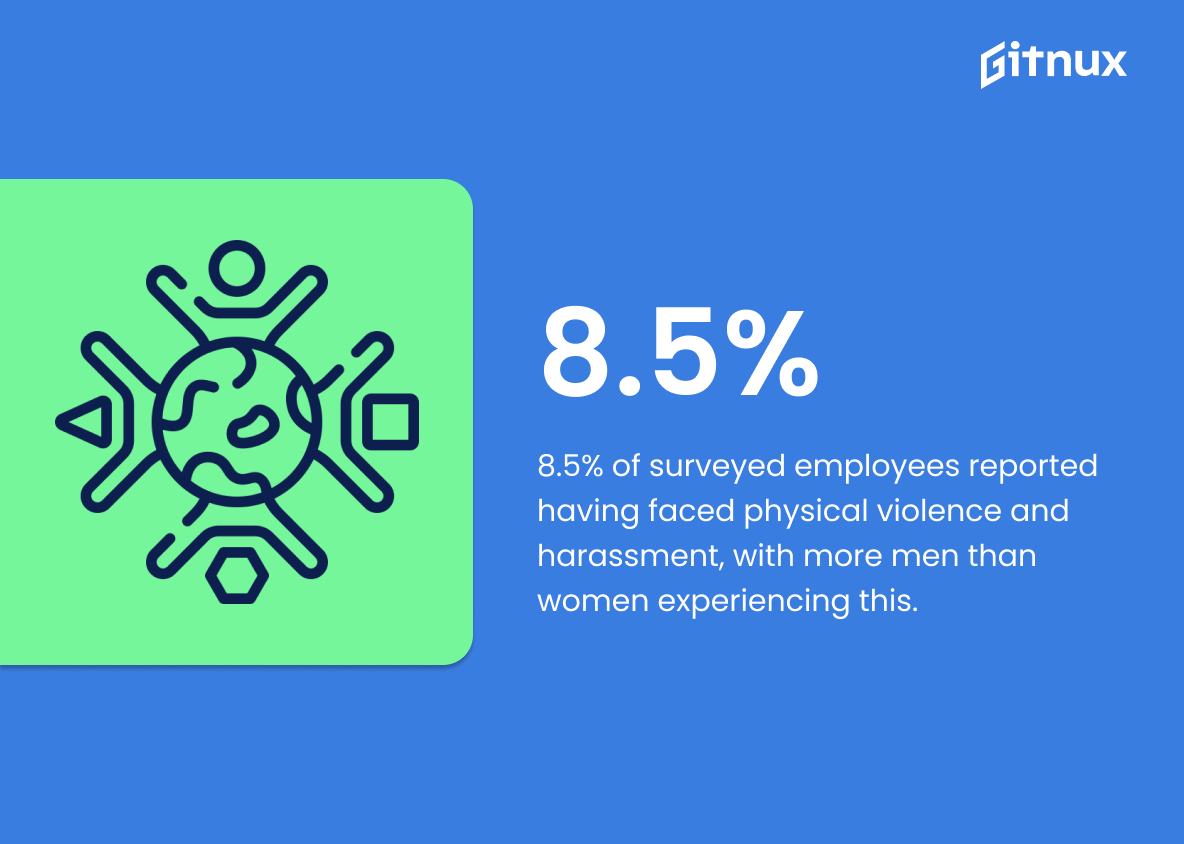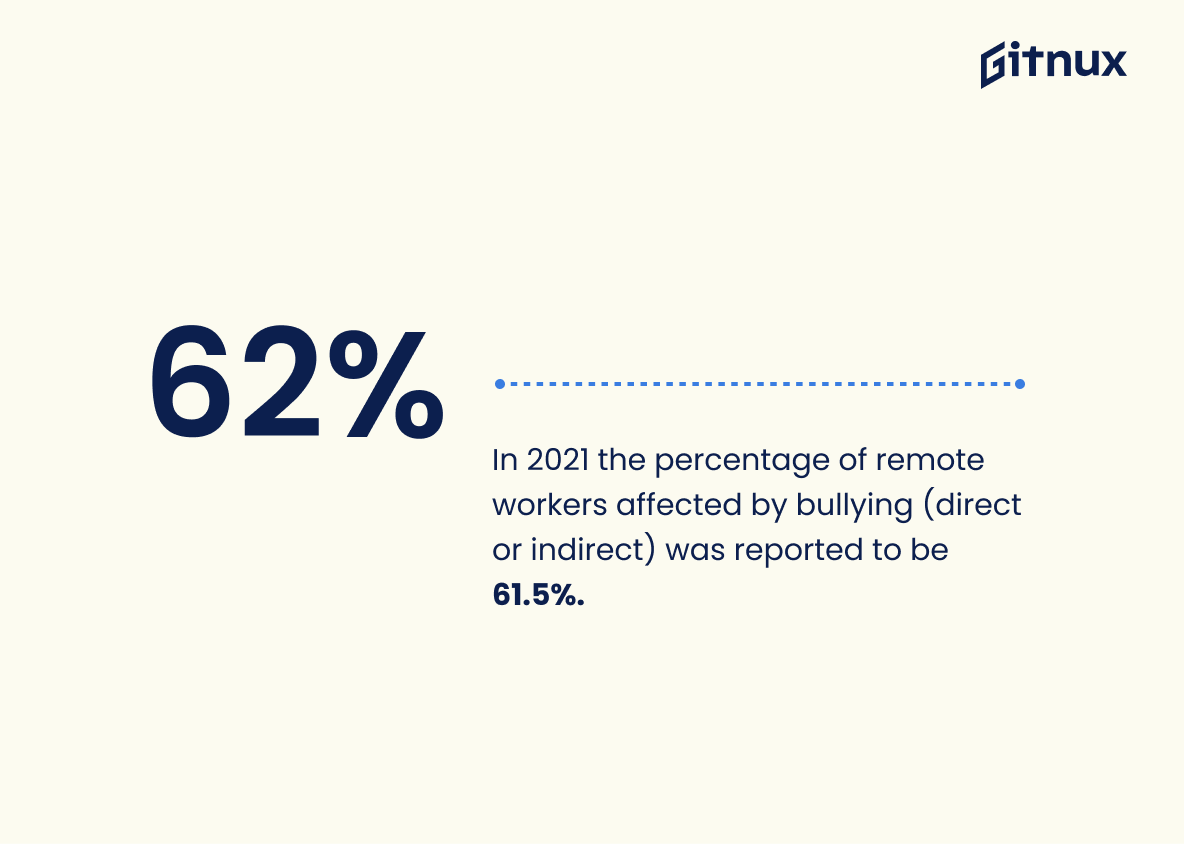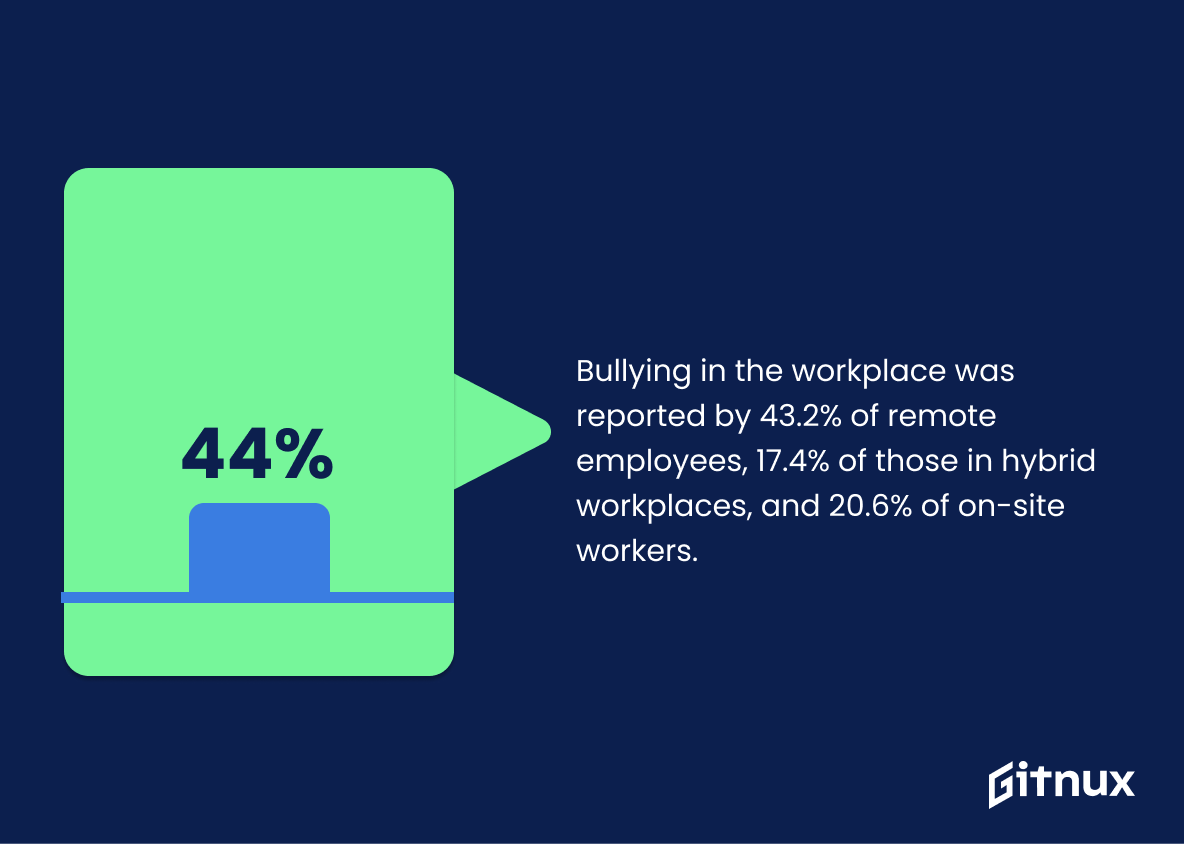Bullying in the workplace is a serious issue that affects employees of all ages, races, and genders. The statistics surrounding workplace bullying are alarming, with studies showing that up to 35% of employees have experienced bullying in the workplace. It can cause physical and mental harm to the victim, affect their job performance, and lead to high turnover rates.
In this post, we will examine bullying in the workplace statistics, including the prevalence, types, impact and consequences. As well as what we can do to address bullying in the workplace and create a safe and healthy work environment for everyone.
Bullying In The Workplace: The Most Important Statistics
Workplace violence causes American businesses to lose, on average, $250 to $330 billion every year.
5-10% of the European workforce is at any one time subjected to bullying at the workplace.
Prevalence Of Bullying In The Workplace
Workplace bullying is any repeated, unreasonable behavior directed towards an employee or group of employees, which creates a risk to health and safety.
According to a study conducted by the Workplace Bullying Institute (WBI), in the United States, there are roughly 2 million victims of workplace violence each year.
30% of Americans have suffered from workplace abuse; another 19% have witnessed it; 49% are affected by it; and 66% are aware that workplace bullying happens.
Meanwhile, 5-10% of the European workforce is at any one time subjected to bullying at the workplace.
There’s a significant increase from previous years, with the Society for Human Resource Management (SHRM) reporting that the rates of workplace violence have increased 12% over seven years – from 36% in 2012 to 48% by 2019.
Furthermore, workplace bullying is more prevalent in certain industries. The Bureau of Labor Statistics found that 20,050 workers in the private industry experienced trauma from nonfatal workplace violence in 2020.
Among these victims, 76% worked in the healthcare and social assistance industry.
As of Q4 2021, over 30% of nurses reported an increase in attacks against them, while 44% of school teachers also report attacks in the workplace.
Bullying In The Workplace – Who And How?
Bullying in the workplace can take on many forms, including physical, verbal and psychological abuse.
Verbal bullying, such as shouting and name-calling, is the most common form of bullying, with 23.3% reported to have received aggressive email tones and 17.8% had colleagues yelling at them.
Psychological bullying, such as spreading rumors or excluding someone from work activities, is also prevalent, reported by 20.2% (negative gossip from co-workers).
8.5% of surveyed employees reported having faced physical violence and harassment, with more men than women experiencing this.
Of respondents, 6.3% reported facing sexual violence and harassment, with women being particularly exposed.
Workplace bullying comes from a variety of sources. In many cases, the bully is a supervisor or manager. Studies indicate that managers and bosses represent 65% of bullies.
However, coworkers, customers, and even subordinates can also be perpetrators of workplace bullying. WBI’s survey shows bullying among peers of the same rank occurs in approximately 1 in 5 cases, when lower-ranking subordinates bully superiors in 14% of cases.
Workplace Cyberbullying
If you think that working virtually can save you from these horrible experiences, think again. With more employees working remotely and communicating through digital platforms, the opportunity for cyberbullying to occur has increased.
In 2021 the percentage of remote workers affected by bullying (direct or indirect) was reported to be 61.5%.
The national rate was 49%, while the rate for the occupied sample respondents was 61%.
43.2% of employees experienced bullying in the workplace as a bullied target while working remotely, 17.4% in hybrid workplace and 20.6% while working on-site.
18.3% of remote workers witnessed bullying in the workplace, in comparison with 15.8% of workers in traditional work settings.
Bullying when working remotely is mostly seen in group meetings/video calls, where the victim is humiliated or treated in a derogatory manner.
15% of this harassment is done in private meetings between the bully and victim.
6% of the bullying in remote workplace is through group emails, where the bully is denigrated in front of other peers and 3% of the bullying happens in individual emails.
Impact And Consequences Of Workplace Bullying
The impact of workplace abuse can be significantly negative towards the victim’s physical and mental health.
The WBI states that stress-related diseases and health complications from prolonged exposure to the stressors of bullying include: anxiety, chronic fatigue syndrome, panic attacks, post-traumatic stress disorder (PTSD) and many more.
Nearly 50% of survey respondents agree that bullying/harassment in the workplace is the biggest threat to workplace health.
The study by the Bureau of Labor Statistics shows that 22% of victims required 31 or more days away from work to recover, and 22% involved 3 to 5 days away from work.
It is heartbroken that the cost of ending bullying is still largely shouldered by the victims. Survey of WBI shows that in 2021, the victim resignation rate is 23%.
Bullied targets are also terminated (12%), forced to resign (17%) (but made to look like they volunteer to leave), compelled to quit for the sake of their mental and physical wellbeing (15%) or must transferred (15%).
Nevertheless, companies and businesses are also damaged when workplace bullying happens. Workplace violence results in American businesses losing an average of $250 to $330 billion annually, according to the American Federation of Labor and Congress of Industrial Organizations.
The typical settlement out of court for a single case of workplace violence is around $500,000. Meanwhile, the usual award given by a jury in workplace violence incidents can reach as high as $3 million.
Legal Policies And Protections Against Bullying In The Workplace
Unfortunately, there is currently a lack of protection for victims of workplace bullying.
Only 45% of U.S. employees are aware of a workplace violence prevention program at their company.
Additionally, 31% of employees say they are not aware of any company policies about workplace violence, and 24% of workers say they are unsure if such things exist at their places of work.
55% of HR professionals do not have any idea if their organization has a workplace violence prevention program.
World Bank’s data finds that in 59 countries, women are not legally protected from workplace sexual harassment.
The lack of legal protection is observed in 70% of economies in the Middle East and North Africa, half in East Asia and the Pacific, and one-third in Latin America and the Caribbean.
An estimated 25% of workplace violence incidents go unreported by businesses.
Up to 90% of businesses do not comply with federal Occupational Safety and Health Administration (OSHA) recordkeeping and reporting regulations.
What Can We Do To Prevent Workplace Bullying?
By creating a positive work environment and promoting open communication, employers can help reduce the risk of bullying in the workplace.
It is great to know that according to WBI’s study, some employers are taking positive action to eliminate bullying and the share of negative outcomes is starting to rise for perpetrators.
In 2021, the negative outcome rate for perpetrators was recorded as 23%, which is an increase from the 2% rate reported in 2003, and 11% in 2010. Although the perpetrator rate of quitting (3%) is one-seventh the rate of targets (23%), progress is being made towards holding perpetrators accountable.
Supplementary Statistics
75% of employees have been affected by workplace bullying, either as a target or as a witness.
Bullying is not an isolated incident, but rather a widespread problem that affects the majority of employees. This statistic is a powerful reminder that workplace bullying is a serious issue that needs to be addressed.
72% of workplace bullying perpetrators are supervisors or managers.
Workplace bullying is not only perpetrated by peers, but also by those in positions of authority. It highlights the need for employers to take a proactive stance in preventing and addressing bullying, particularly when it is coming from supervisors and managers. It also serves as a warning to employees that they may not be safe from bullying even if they are in a position of relative powerlessness.
45% of workplace bullying targets suffer stress-related health problems.
Thus, bullying can have a devastating impact on the physical and mental health of its victims, and employers must take steps to ensure that their workplace is free from bullying.
40% of workplace bullying targets do not report the abuse.
This indicates that a significant portion of those affected by it are not speaking up. It highlights the need for employers to take proactive steps to create a safe and supportive environment for their employees, and to ensure that those who are being bullied feel comfortable coming forward.
19% of workplace bullying cases involve direct accusations from someone in a higher position.
This highlights the need for employers to take a proactive stance in preventing and addressing bullying, regardless of the perpetrator’s rank.
Over 50% of employees believe their workplace needs to do more to address bullying.
A majority of employees feel that their workplace is not doing enough to tackle this problem, which is a clear indication that more needs to be done to ensure a safe and respectful work environment.
44% of workplace bullying victims experience a negative impact on their work performance.
Not only does bullying have a detrimental impact on the mental and emotional wellbeing of its victims, but it also has a tangible effect on their work performance. This serves as a warning to employers that workplace bullying should not be taken lightly, as it can have a serious impact on the productivity of their employees.
60% of workplace bullies are men, and they target women in 57% of cases.
The fact that men are more likely to be perpetrators of bullying, and women are disproportionately targeted. This is an important issue to address, as it can have a significant impact on the mental health and wellbeing of those affected.
15% of adult Canadians report experiencing bullying at work.
Bullying is a serious issue that affects a significant portion of the Canadian adult population. It is a call to action for employers to take steps to ensure that their workplaces are free from bullying and harassment.
39% of workplace bullying targets experience symptoms of depression.
This highlights the fact that bullying can have a serious psychological impact on its victims, with 39% of targets experiencing symptoms of depression. This is a clear indication that workplace bullying should not be taken lightly and that employers should take steps to ensure that their employees are safe from such behavior.
The financial cost of workplace bullying in the US is about $4 billion annually.
It serves as a powerful illustration of the tangible costs associated with this form of harassment, and highlights the need for employers to take proactive steps to prevent and address bullying in the workplace.
35% of employees feel that their workplace culture enables bullying. 36% of workplace bullies rely on personal insults and derogatory remarks as primary tactics.
This statistic is a stark reminder of the prevalence of personal insults and derogatory remarks as primary tactics used by workplace bullies. It highlights the need for employers to take a proactive stance in addressing this issue and creating a safe and respectful work environment for all employees.
Around 25-30% of American workers have experienced or witnessed workplace bullying.
A huge portion of the American workforce has been exposed to this type of behavior, which displays the need for employers to take steps to address the issue.
Chronic workplace bullying causes $14,000 per affected employee in lost productivity.
Thus, workplace bullying should not be taken lightly and employers should take steps to ensure that their workplace is free from bullying.
Conclusion
Bullying in the workplace is a serious issue that can have a negative impact on the mental and physical health of employees. It is important for employers to take proactive steps to address bullying in the workplace, such as implementing anti-bullying policies and providing training for employees on how to respond to bullying.
By taking these steps, employers can create a safe and respectful workplace environment and help protect their employees from the damaging effects of workplace bullying.
References:
Linkedin: “Key findings European Union on bullying and sexual harassment in the workplace, in public, and in political life”, cited in February 2023 (Source)
Zippia: “30 Startling Workplace Violence Statistics [2023]: Statistics On Workplace Violence In The US”, cited in February 2023 (Source)
WBI: “2021 WBI U.S. Workplace Bullying Survey”, cited in February 2023 (Source)
Purdue University: “Workplace bullying takes an emotional, physical toll; support is in place to help”, cited in February 2023 (Source)
Mydisabilityjobs: “Workplace Bullying Statistics Research & Facts | Updated 2023”, cited in February 2023 (Source)
CDC-NIOSH: “Occupational Violence”, cited in February 2023 (Source)
ILO: “Violence and harassment at work has affected more than one in five people”, cited in February 2023 (Source)
Techjury: “15 Disturbing Workplace Violence Statistics for 2023”, cited in February 2023 (Source)
World Bank: “Sexual harassment – Where do we stand on legal protection for women?”, cited in February 2023 (Source)
ZipDo, cited June 2023: Bullying In The Workplace Statistics
